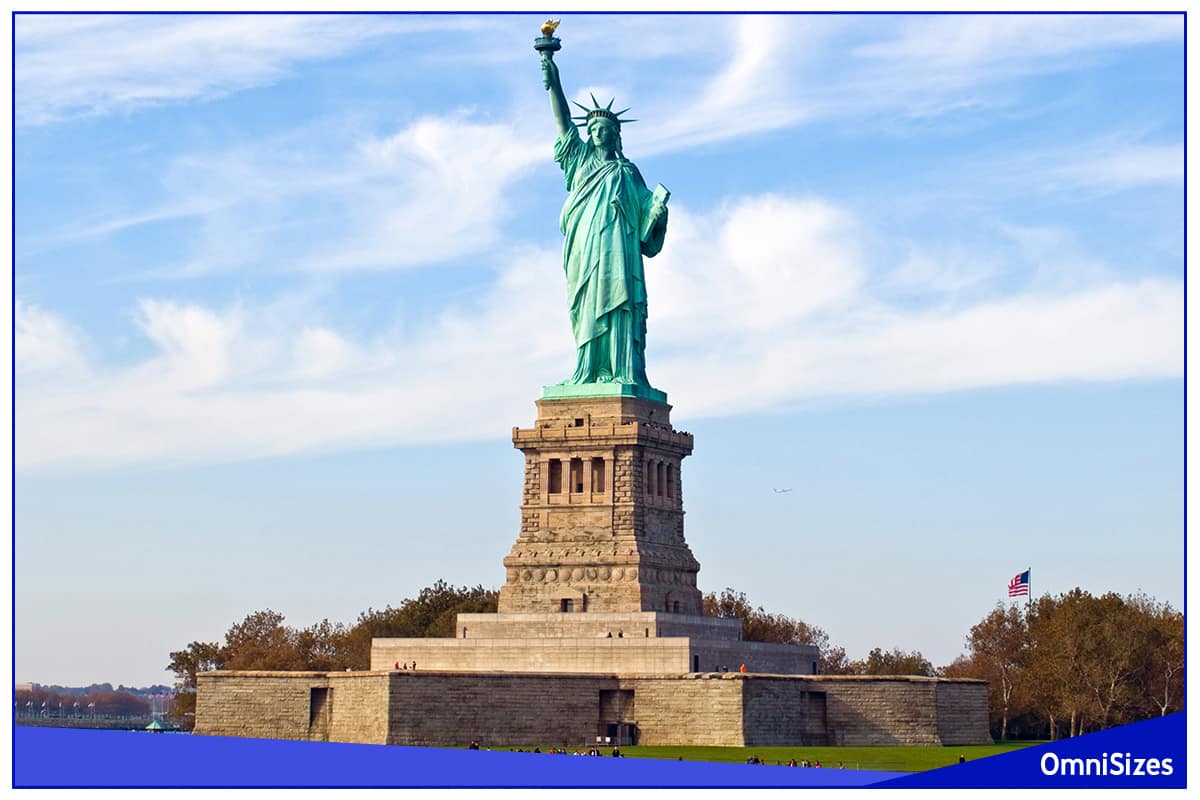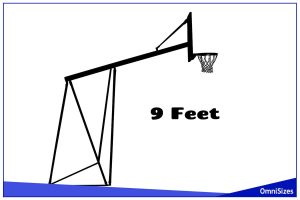Have you ever tried to visualize a distance or height without the proper tools? It’s a challenge to say the least, especially if you have no point of reference. You may know that 100 feet equals 33-1/3 yards or 30.48 meters, yet these figures won’t help much with estimating this length. For that, you’ll need to know the sizes of common objects to use as references in your mind’s eye.
Here’s a list of 10 objects that are 100 feet in height:
- 1/3 Statue of Liberty
- 10-story building
- ½ giant sequoia tree
- 30-yard American football field section
- 2-3 telephone poles
- ½ length of a soccer pitch
- 3 school buses
- 14 phone booths
- 17 refrigerators
- 7-12 African elephants
1. 1/3 Statue of Liberty

The Statue of Liberty, or as the world likes to call her, Lady Liberty— is the ultimate New Yorker with the best room views in town! Gifted by France to the United States in 1886, she proudly holds a torch above her head with her right hand, while her left hand clutches a tablet inscribed with the date of the American Declaration of Independence.
Lady Liberty stands a whopping 305 feet from the tip of her torch to the bottom of her base. To use her as a reference for 100 feet, simply divide her overall height into thirds. Alternatively, you can 2/3 of her pedestal’s height, which is a whopping 154 feet tall!
2. 10-Story Building

Ever gazed up at a 10-story building and wondered about its tales? These urban giants stand as testaments to human ingenuity. Each floor, typically around 10 feet high, is packed with stories—from busy offices to cozy apartments, they’re like vertical neighborhoods!
Now, if you’re scratching your head trying to figure out what 100 feet looks like, just picture a 10-story building. These buildings can become your go-to urban yardsticks. Just make sure not to include the height of the roof!
3. ½ Giant Sequoia Tree

For the nature lovers out there, this one is for you. Instead of gazing toward the heavens in an urban setting, just head out to Sierra Nevada in California and look for a giant sequoia tree. These natural skyscrapers with their massive girth and towering presence can live for over 3,000 years!
Struggling to picture 100 feet? Just look at a Giant Sequoia and imagine dividing it in half. These trees typically grow between 250 and 300 feet high. Their bark alone can be up to 2 feet thick!
4. 30-yard American Football Field Section

An American football field is a 100-yard stage where athletic dramas unfold! Each yard is a step towards glory or defeat, marked by the dance of cleats and strategy. The end zones, which add another 20 yards (10 in both ends), aren’t just for touchdowns—they’re bright, colorful billboards of team pride!
Just picture a 30-yard section of an American football field, and you’ll have a decent idea of what 100 feet looks like. That’s about 1/3 of the field, from the 50-yard line to the 20. In reality, 33 yards would be closer to 100 feet, but who has time to spot those tiny lines?!
5. 2-3 Telephone Poles

Telephone poles are the unsung heroes of the urban landscape, acting somewhat as a lookout along our streets. These wooden wonders are lifelines that carry our voices and internet data across miles. Fun fact: they’re often made from Douglas fir or Southern pine and can last up to 40 years!
To get a grip on what 100 feet looks like, imagine 2 to 3 telephone poles stacked one on top of another. Typically ranging from 30 to 40 feet tall, these vertical lifelines offer a handy visual guide if you’re on the streets.
6. ½ Length of a Soccer Pitch

A soccer pitch is a canvas where athletic artistry comes to life. Standard pitches vary in size, but they typically stretch between 100 to 130 yards in length and 50 to 100 yards in width. Each blade of grass witnesses the drama of goals, fouls, and victories.
For a handy measure of 100 feet, think of half the length of a soccer pitch. Now, imagine professional soccer players running up and down the pitch several times during a 90-minute match! The average player runs 6.3 miles per game or 332.64 times 100 feet!
7. 3 School Buses

School buses are designed with safety as a top priority, which is ironic considering the lack of seat belts (crash physics somewhat makes up for that). Their distinctive color, officially known as “National School Bus Glossy Yellow,” is chosen for its visibility. Each bus is around 35 feet long and can carry up to 90 kids!
Now, imagine 3 school buses lined up bumper-to-bumper. This convoy gives a clear visual of 100 feet in a way that’s both familiar and a bit fun.
8. 14 Phone Booths

Once a staple of city streets, phone booths now evoke a nostalgic charm. These quaint boxes were lifelines before the cell phone era. The iconic red telephone box of Britain was designed by Sir Giles Gilbert Scott in 1924, and some are now repurposed as mini-libraries or coffee stands.
To visualize 100 feet, consider lining up 14 phone booths end-to-end. Each booth, typically around 7 feet tall, creates a retro-measuring tape. Do you remember the phone booth stuffing fad? If Ripley’s isn’t lying, 14 phone booths with 40 people in each would house 560 people!
9. 17 Refrigerators

Refrigerators have evolved from luxury items exclusively for the rich to a literally household appliance. To give you an idea of how luxurious they were, they would sometimes cost up to $1,000! Not impressive enough? That’s the equivalent of around $13,000 in today’s money!
To use refrigerators as a makeshift measuring tool, you should know that each stands about 6 feet tall. So, 100 feet would equal 17 average-height refrigerators!
10. 7-12 African Elephants

African elephants are the world’s largest land animals. These majestic giants have a memory sharper than most humans, which—in today’s social media age—probably isn’t saying much. What is saying is their ivory tusks never stop growing!
The next time you visit your local zoo, pay close attention to the elephants there. An African elephant stands anywhere from 8 to 13 feet, meaning 7 to 12 of them standing on top of each other would measure 100 feet high!






